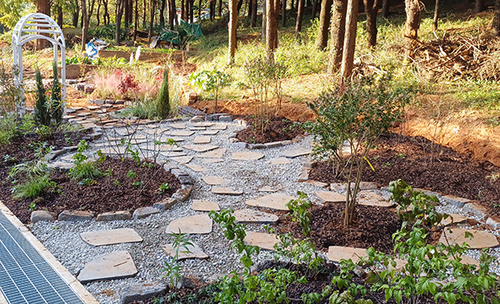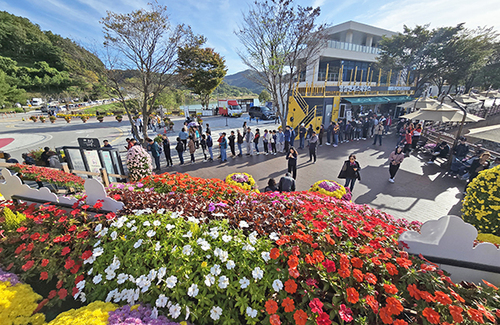| ▲ 2020년 1월 20일 국내에서 첫 코로나19 확진자가 발생한 이후 예방 및 확산 차단을 위해 10월 13일 다중이용시설을 중심으로 도입된 '실내 마스크 착용, 의무'가 오는 30일부터 '권고'로 전환된다. 【 코로나19 누적 확진자는 총 2,992만7,958명(19일 0시 기준)으로 집계됐으며 33,104명이 안타깝게 목숨을 잃었다】 / 도표제공 = 전북도청 © 김현종 기자 |
|
설 연휴가 끝나는 오는 30일부터 실내 마스크가 '의무'가 아닌 '권고'로 전환된다.
실내 마스크 착용 의무는 지난 2020년 10월 13일 다중이용시설을 중심으로 도입된 이후 27개월여 만에 풀리게 됐다.
한덕수 국무총리는 코로나19 3년을 맞는 20일 정부 서울청사에서 주재한 코로나19 중앙재난안전대책본부 회의 모두발언에서 "오는 30일부터 일부 시설 등을 제외하고 실내마스크 착용 의무를 권고로 완화하는 방안을 논의ㆍ확정할 예정"이라고 밝혔다.
그러면서 "지난해 12월 결정한 실내마스크 착용 의무 조정지표 4가지 중 ▲ 주간 환자 발생 2주 이상 연속 감소 ▲ 주간 신규 위중증 환자 전주 대비 감소ㆍ주간 치명률 0.10% 이하 ▲ 4주 내 동원 가능 중환자 병상 가용능력 50% 이상 등 3가지가 충족됐고 대외 위험요인도 충분히 관리 가능한 수준으로 판단됐다"고 설명했다.
이어 "설 연휴 이동이 늘어나고 대면 접촉이 증가하는 점을 고려해 완화 시점을 연휴 이후로 결정했다"며 "향후 감염 추이에 따라 권고 전환 여부를 적극적으로 검토해 나가겠다"고 덧붙였다.
아울러 "지난해 설 연휴를 거치면서 주간 일평균 확진자가 크게 증가했고 실내마스크 착용 의무 완화가 더해지면 일시적으로 확진자가 증가할 가능성이 있다"며 "방역당국과 지방자치단체에 철저한 대비"를 주문했다.
또한 "마스크 착용 의무 완화로 백신 접종의 중요성은 더 커졌다"며 "60세 이상 고위험군 분들과 감염 취약시설 거주 어르신들께서는 하루라도 빨리 접종 받으시길 강력히 권고한다"고 당부했다.
방역당국은 연속 3주 확진자가 감소하며 확산세가 잦아들었고 의료역량과 백신·치료제도 충분해 마스크 의무 해제로 확진자가 다소 증가하더라도 대응이 가능하다고 판단했다.
다만, 감염 취약계층 보호를 위해 버스ㆍ지하철ㆍ택시 등 대중교통수단과 요양병원 등 감염취약시설 및 의료기관ㆍ약국 등에서는 기존처럼 마스크를 반드시 착용해야 한다.
한편, 지난 2020년 1월 20일 국내에서 첫 코로나19 확진자가 발생한 이후 누적 확진자는 총 2,992만7,958명(19일 0시 기준)으로 집계됐으며 33,104명이 안타깝게 목숨을 잃었다.
통계에 잡히지 않은 미확진 감염자를 포함하면 국민 10명 가운데 7명이 코로나19에 감염된 경험이 있는 것으로 최근 질병관리청의 항체양성률 조사에서 확인됐다.
3년간 모두 7번의 대유행이 찾아왔고 현재 7차 유행이 안정된 상황이다.
최근 일일 신규 확진자 수는 7차 유행 이전 수준으로 낮아졌다.
자연감염과 백신 접종을 통한 국민의 항체양성률이 99%에 육박하면서 일상 회복도 가속화되고 있다.
실내 마스크 의무가 대폭 완화면 코로나19 사태로 시행됐던 방역 조치 가운데 ▲ 확진자 7일 격리 ▲ 의료기관 ▲ 약국 ▲ 대중교통에서의 실내마스크 의무만 남는다.
국회 등에서 자가격리 기간을 3일로 단축하자는 의견이 나온 만큼, 실내마스크 의무 해제 이후 격리기간 단축에 대한 논의가 시작될 것으로 예상된다.
확진자 격리기간은 2020년 2월부터 2021년 10월까지 14일ㆍ2021년 11월에 10일로 단축됐고 지난해 1월 7일로 줄었다.
당시 유행 상황을 고려한 시뮬레이션 결과, 격리기간이 3일로 단축될 경우 확진자가 7일 격리 유지에 비해 4배ㆍ격리 해제 때에는 8.3배가 될 것이라는 예측으로 '7일 격리'를 유지하고 있다.
☞ 아래는 위 기사를 구글 번역이 번역한 영문 기사의 '전문' 입니다.
구글 번역은 이해도를 높이기 위해 노력하고 있으며 영문 번역에 오류가 있음을 전제로 합니다.
【Below is the 'full text' of the English article translated by Google Translate.
Google Translate is working hard to improve understanding, and assumes that there are errors in the English translation.】
Wearing a face mask… Released from the 30th
Public transportationㆍwelfare facilitiesㆍmedical institutionsㆍpharmaciesㆍetc maintain 'obligation'
Reporter Kim Hyun-jong
From the 30th, when the Lunar New Year holiday ends, indoor masks will be switched to 'recommendation' rather than 'mandatory'.
The obligation to wear indoor masks has been lifted 27 months after it was introduced on October 13, 2020, focusing on multi-use facilities.
Prime Minister Han Deok-soo said at a meeting of the Central Disaster and Safety Countermeasures Headquarters for COVID-19 presided over at the Seoul Government Complex on the 20th, marking the 3rd year of Corona 19, "A plan to ease the obligation to wear indoor masks from the 30th with the exception of some facilities. will be discussed and finalized," he said.
"Among the four adjustment indicators for the mandatory wearing of indoor masks determined in December of last year, ▲ Weekly cases decreased for more than 2 weeks in a row ▲ Weekly new critically ill patients decreased compared to the previous week ㆍ Weekly fatality rate was 0.10% or less ▲ Can be mobilized within 4 weeks Critical care bed availability 50 Three conditions, including % or more, were met, and external risk factors were judged to be sufficiently manageable."
He added, "Considering the increase in travel and face-to-face contact during the Lunar New Year holiday, the timing of easing was decided after the holiday."
In addition, "Last year's Lunar New Year holidays, the weekly average daily average confirmed cases increased significantly, and if the mandatory wearing of indoor masks is added, there is a possibility that the number of confirmed cases will increase temporarily."
In addition, he said, "The importance of vaccination has increased with the easing of the obligation to wear a mask," and "strongly recommends that those aged 60 and older and senior citizens living in facilities vulnerable to infection get vaccinated as soon as possible."
The quarantine authorities judged that the spread had subsided as the number of confirmed cases decreased for three consecutive weeks, and that it was possible to respond even if the number of confirmed cases increased slightly due to the lifting of the mask duty as the medical capacity and vaccines and treatments were sufficient.
However, to protect the vulnerable from infection, masks must be worn as before in public transportation such as buses, subways, and taxis, facilities vulnerable to infection such as nursing hospitals, and medical institutions and pharmacies.
Meanwhile, since the first COVID-19 confirmed case occurred in Korea on January 20, 2020, a total of 29,927,958 confirmed cases(as of 0:00 on the 19th) were counted, and 33,104 people unfortunately lost their lives.
Including unconfirmed infected people who are not caught in the statistics, 7 out of 10 people have experienced corona19 infection, which was confirmed in a recent antibody positive rate survey by the Korea Centers for Disease Control and Prevention.
There have been 7 pandemics in 3 years, and the 7th epidemic is now stable.
Recently, the number of new confirmed cases per day has been reduced to the level before the 7th epidemic.
Daily recovery is also accelerating as the antibody positive rate of the people through natural infection and vaccination is approaching 99%.
If the indoor mask duty is greatly eased, only the indoor mask duty in public transportation will remain, among the quarantine measures that were implemented in the wake of the Corona 19 incident.
As opinions have emerged in the National Assembly and others to shorten the self-isolation period to three days, it is expected that discussions on shortening the quarantine period will begin after the mandatory indoor mask is lifted.
The quarantine period for confirmed patients was shortened to 14 days from February 2020 to October 2021, 10 days in November 2021, and reduced to January 7 last year.
As a result of the simulation considering the epidemic situation at the time, if the quarantine period is shortened to 3 days, the '7-day quarantine' is maintained with the prediction that the number of confirmed cases will increase 4 times compared to maintaining 7-day quarantine and 8.3 times when quarantine is lifted.





















 많이 본 뉴스
많이 본 뉴스











